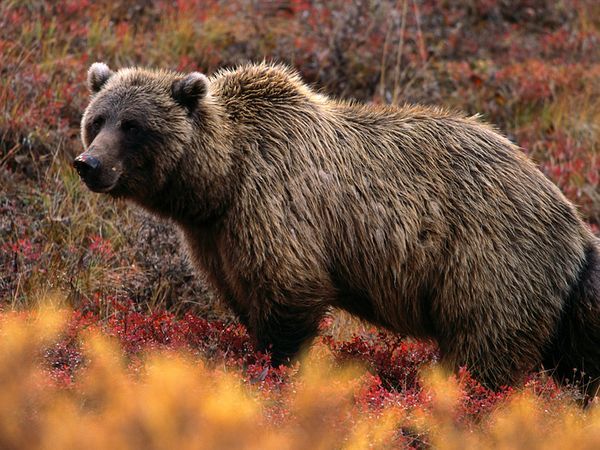Wyoming Gov. Matt Mead has sent a letter to U.S. Interior Secretary Ken Salazar asking for the end of federal Endangered Species Act protections for grizzly bears in the Yellowstone ecosystem.
More Than 600 Area Grizzlies
The Yellowstone grizzly was listed as threatened under the ESA in 1975, when the area’s grizzly bear population declined to an estimated 136 bears. Approximately 650 grizzly bears live in the Yellowstone region today.
Mead argued in his May 24 letter that Yellowstone-area grizzlies are fully recovered and no longer need endangered species protection.
“Many knowledgeable people, including grizzly bear scientists within the Department of Interior, believe the species is unquestionably recovered within the Yellowstone Ecosystem,” Mead wrote.
Costly ESA Protections
Mead, a Republican, said the ESA-mandated grizzly bear recovery program is “severe and costly” and no longer necessary given recent improvements bear habitat, food supply, and population.
“Wyoming’s investment in recovery over the past 28 years exceeds $35 million,” wrote Mead. “The average annual cost to Wyoming for grizzly management approaches $2 million.”
“This is paid by Wyoming hunting license revenue, not United States Fish and Wildlife (USFWS) grants,” Mead added, “and Wyoming does not have jurisdiction for the bears—the USFWS does.”
Grizzlies Becoming Abundant
In addition to the cost of the recovery program, Mead expressed concern that four people have been killed by Yellowstone grizzlies in the past two years. The killings marked the end of a 14-year span (1986-2010) in which there were no fatalities from grizzly attacks in the Yellowstone region.
There is growing evidence the bears are expanding their range as their numbers increase. Yellowstone grizzlies have wondered south as far as the Grand Teton National Park, where until recently, only black bears had been cited.
Seeking a Timely Decision
With his letter to Salazar, Mead hopes to speed up a review process that normally takes FWS officials two years to complete.
“Two years is too long and the cost is too high,” Mead wrote. “The continued listing of a recovered population of grizzly bears is a threat to people, especially recreationalists, hunters, and property owners.”
State Considers Management Plan
With the grizzly bear’s continued recovery, Wyoming officials are considering managed hunts if the federal government removes grizzly bears from Endangered Species Act protection. State wildlife officials would set yearly hunting quotas that would ensure the long-term survival of the species while keeping local populations manageable.
Bonner R. Cohen, Ph. D. ([email protected]) is a senior fellow at the National Center for Public Policy Research.





